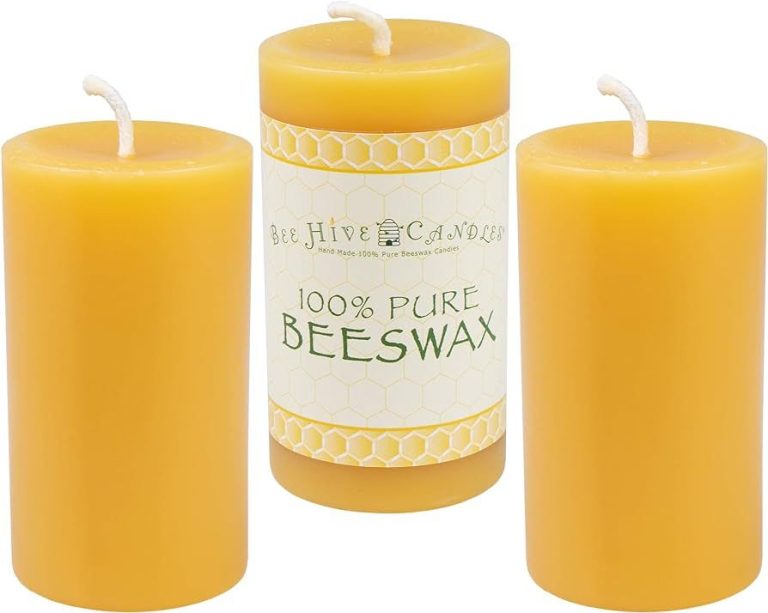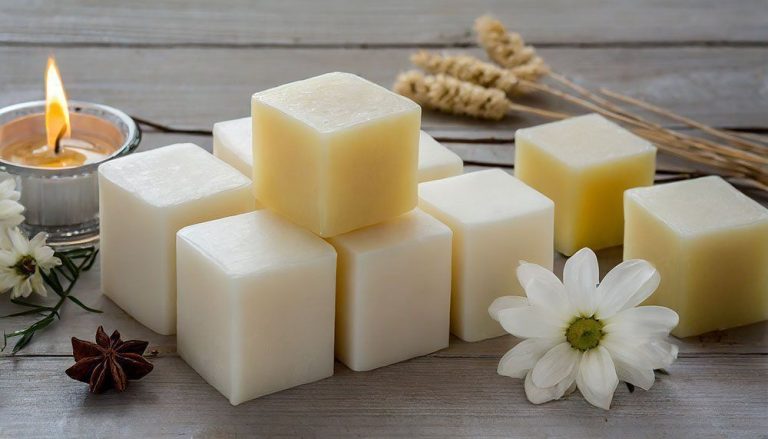Where Does Most Candle Wax Come From?
Candles have a long and storied history, dating back thousands of years. They have been an essential source of illumination and ambiance throughout much of human civilization. Today, candles continue to have important uses and meanings beyond mere lighting. This article explores the various sources of candle wax, how they are made, their different properties and applications, and the candle industry’s evolution and trends.
Paraffin Wax
Paraffin wax is the most common type of candle wax used today. It is a petroleum-based wax made from refined crude oil. The wax is extracted during the oil refining process and undergoes additional processing and purification to meet quality standards for use in candles and other products.
Paraffin wax has several properties that make it ideal for candle making. It has a low melting point, making it easy to melt and pour into candle molds. When it solidifies, paraffin wax forms a smooth texture and provides rigidity to help candles retain their shape. The wax also has an oil content that allows it to burn slowly, evenly, and cleanly. This gives paraffin wax candles excellent burn time and a bright flame.
Most major candle manufacturers use paraffin wax because of its performance, availability, and low cost. Paraffin makes up over 90% of the candle wax sold in the U.S. It can be blended with other waxes to create innovative new candle formulations as well.
Where Paraffin Comes From
Paraffin wax originates as a by-product from petroleum refining or crude oil distillation. During the refining process, crude oil is heated and the various components vaporize at different temperatures. The heaviest molecules with the highest boiling points, like paraffin wax, remain unused and are separated out.1
These paraffin wax by-products go through a finishing process called paraffin wax refining to become usable. The refining process involves filtering, washing, and separating the different chain lengths of hydrocarbons to achieve the desired melting point and oil content for the intended application.2 Fully refined and clarified paraffin wax is odorless, colorless, and inert, making it a popular choice for candle making.
Beeswax
Beeswax is one of the oldest and most traditional waxes used for candle making. It has been utilized for millennia, with evidence of beeswax candles found in ancient Egypt over 5,000 years ago (https://beeswaxco.com/bulk-beeswax/the-history-of-human-uses-for-beeswax/). Unlike animal-based tallow, beeswax burns pure and cleanly without producing a lot of smoke or odor (https://candles.org/history/).
Beeswax is all-natural wax produced by honey bees. Worker bees secrete wax from glands on their abdomen and use it to build the familiar hexagonal comb cells in which they store honey and pollen. To collect beeswax for candles and other uses, beekeepers melt and filter the wax from these honeycombs.
Compared to paraffin wax (derived from petroleum), beeswax candles burn longer, are non-toxic, and emit negative ions that help clean the surrounding air. Beeswax has a lovely natural honey aroma and emits a brighter flame. It is also biodegradable and renewable.
While more expensive than paraffin, beeswax remains popular for natural candles, particularly 100% beeswax candles. Many candlemakers blend beeswax with other waxes to balance qualities like burn time, hardness, and cost. Beeswax delivers exceptional performance and remains a top choice for high quality, natural candle waxes.
Where Beeswax Comes From
Beeswax is a natural wax produced by honey bees to make the walls of their honeycomb. It is secreted from glands in the abdomen of worker bees and used to build the honeycomb structures where bees raise their young and store honey.
To produce beeswax, worker bees consume honey and then secrete wax from a series of glands on their abdomen through small pores in their exoskeleton. The wax comes out as small shiny scales that quickly harden into wax. The bees use their mandibles and legs to mold the wax into honeycomb.
Beekeepers will harvest beeswax from the honeycomb when they harvest honey. To extract the beeswax, the beekeeper will melt the honeycomb in hot water or steam, straining out wax from the honey. The wax floats to the top where it can be skimmed off and filtered further to remove impurities. Commercial operations may use a centrifuge to efficiently separate large quantities of wax.
The highest quality beeswax comes from cappings – the thin wax layer that bees produce to seal honey into each cell of newly built comb. Cappings wax is the cleanest and most aromatic beeswax.
Beeswax production is increased by providing sufficient space for comb building and optimizing conditions inside the hive. The wax is usually harvested 1-2 times per year during routine honey harvesting and hive maintenance. With proper care, a healthy hive can produce beeswax for many years.

Sources:
https://www.zoologistperfumes.com/blogs/news/tagged/perfumer
Other Waxes
Paraffin and beeswax are the most common types of wax used in candle making, but there are several other options that see some usage:
Soy wax is made from hydrogenated soybean oil. It was developed in the 1990s as a renewable and environmentally friendly alternative to paraffin wax. Soy wax burns cleaner than paraffin and is biodegradable. However, it is softer and doesn’t hold scent as well. Soy wax makes up a small but growing share of the candle wax market. (Elements of a Candle: Wax)
Palm wax comes from the seeds of palm trees. Like soy wax, it is touted as a sustainable option since palms are rapidly renewable crops. Palm wax candles burn slowly and cleanly. The wax is hard, glossy, and transparent. However, palm wax only accounts for about 1% of commercial candle wax. (Animal and Vegetable Waxes pdf)
Gel wax is a mixture of paraffin and plastics or resins. The additives give the wax more rigidity and higher melting point than paraffin alone. Gel wax allows for better scent throw and decorative designs. But it is relatively expensive compared to paraffin.
Comparisons
When comparing different candle waxes, there are pros and cons to each type:
Paraffin wax is derived from petroleum. It is inexpensive and makes candles that burn cleanly and evenly. However, paraffin produces more soot than other waxes and is not from a renewable resource (https://jessicawellinginteriors.com/best-wax-for-candles/).
Beeswax is natural, renewable, and burns slower and cleaner than paraffin. However, beeswax is more expensive and can be prone to discoloration (https://www.marthastewart.com/8061950/candle-wax-type-guide).
Soy wax is made from soybeans so it is renewable and burns cleanly. But soy wax does not hold scent as well as paraffin or beeswax. It also melts at a lower temperature (https://www.marthastewart.com/8061950/candle-wax-type-guide).
Many candle makers blend waxes to balance out the pros and cons. Adding beeswax to paraffin or soy wax can improve burn quality. Adding paraffin to soy wax can help hold scent better.
Market Share
According to a 2022 report by Grand View Research, paraffin wax dominates the global candle market, accounting for over 80% of the total wax volume. Paraffin is preferred by many candle makers due to its low cost, high availability, and ability to hold fragrance and color well.
Beeswax makes up a much smaller share at around 3-5% globally. While valued for its natural origin and biodegradability, beeswax is more expensive and limited in supply compared to paraffin. The Grand View Research report estimates beeswax will see modest growth of 2.8% CAGR from 2023-2030.
Other waxes like soy, palm, and gels account for the remaining 10-15% share. Soy has seen rising popularity as an eco-friendly alternative to paraffin. Meanwhile gels are appreciated for their smooth finish and vivid colors. The market continues to diversify, though paraffin remains dominant given its performance, availability, and low cost.
Trends
One of the major trends in the candle industry is the growing use of eco-friendly waxes such as soy wax and beeswax. This is driven by increasing consumer demand for sustainable and natural products. According to research by Grand View Research, the global soy wax market size was valued at USD 383.1 million in 2021 and is expected to expand at a compound annual growth rate (CAGR) of 4.7% from 2022 to 2030.
Many consumers are turning to soy candles because soy wax is renewable and biodegradable. Soy wax is made from hydrogenated soybean oil. Beeswax is also gaining popularity as an eco-friendly alternative to paraffin wax. Beeswax is a natural wax produced by honey bees. The global beeswax market size was valued at USD 470.6 million in 2021 and is projected to expand at a CAGR of 3.3% from 2022 to 2030 according to Grand View Research.
As consumers become more environmentally conscious, the demand for candles made from natural waxes is expected to continue growing. Brands and manufacturers are responding to this trend by increasingly offering soy, beeswax, and other natural wax candles.
Conclusion
In summary, most modern candle wax comes from either paraffin wax or beeswax. Paraffin wax is a petroleum byproduct created through refining crude oil. It became popular in the mid-to-late 1800s as a cheap alternative to expensive beeswax. Beeswax is a natural wax made by honey bees. It has been used for centuries in candle making, but was largely replaced by paraffin in the 19th century. While other natural waxes like soy wax have gained some market share, paraffin and beeswax remain the two dominant sources of candle wax today. Paraffin accounts for the bulk of production due to its low cost, while beeswax retains popularity for its natural origin and appealing honey scent. However, there are tradeoffs between the two in terms of environmental impact, burn properties, and pricing. Both will likely continue playing a role in candlemaking into the foreseeable future.





